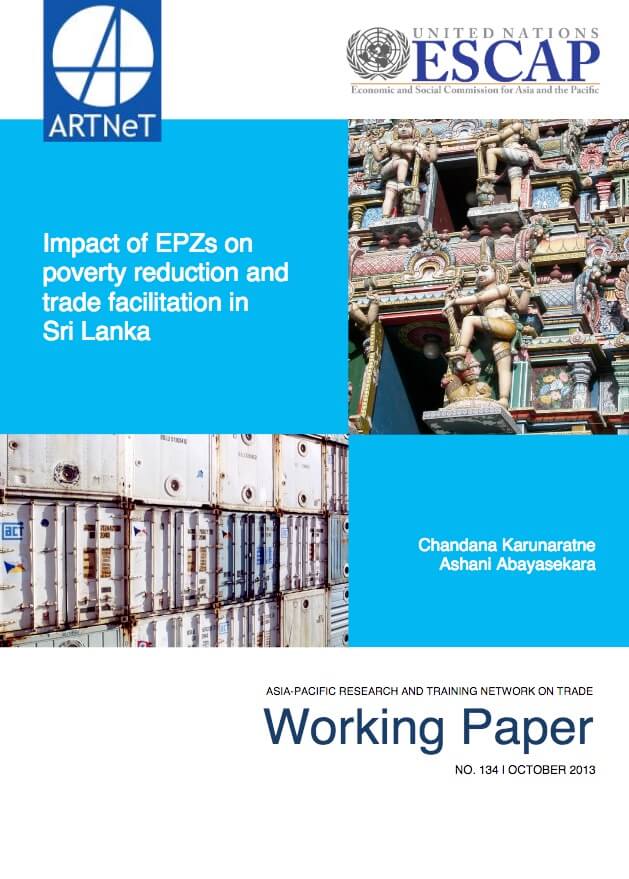Impact of EPZs on poverty reduction and trade facilitation in Sri Lanka

Export Processing Zones (EPZs) have been among the primary factors of export-oriented growth in recent decades. EPZs first came about in 1959 with the establishment of the Shannon Zone in Ireland. Following that, the first few zones were envisaged primarily as industrial zones that were to attract foreign investors to set up facilities to process imported materials and subsequently export their products. With regard to trade facilitation, it is clear that EPZs offer some important advantages. Through simplification of customs procedures that reduce the number of steps and documents needed when processing imports and exports, thereby cutting down on the amount of time taken to process these goods, EPZs have had a significant impact on facilitating trade. This is particularly the case with goods being delivered by sea. Furthermore, operating within an EPZ allows firms to take advantage of backward and forward linkages available in the zone. Manufacturers in the garment industry, for example, can source from suppliers of yarn and thread processing plants within the same EPZ and further down the supply chain, and they can link up with washing plants that create finishes for articles of clothing, also within the EPZs. These are opportunities that are rarely available for companies that operate outside these zones.
